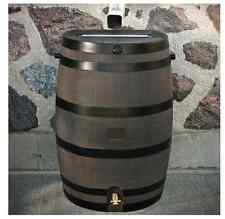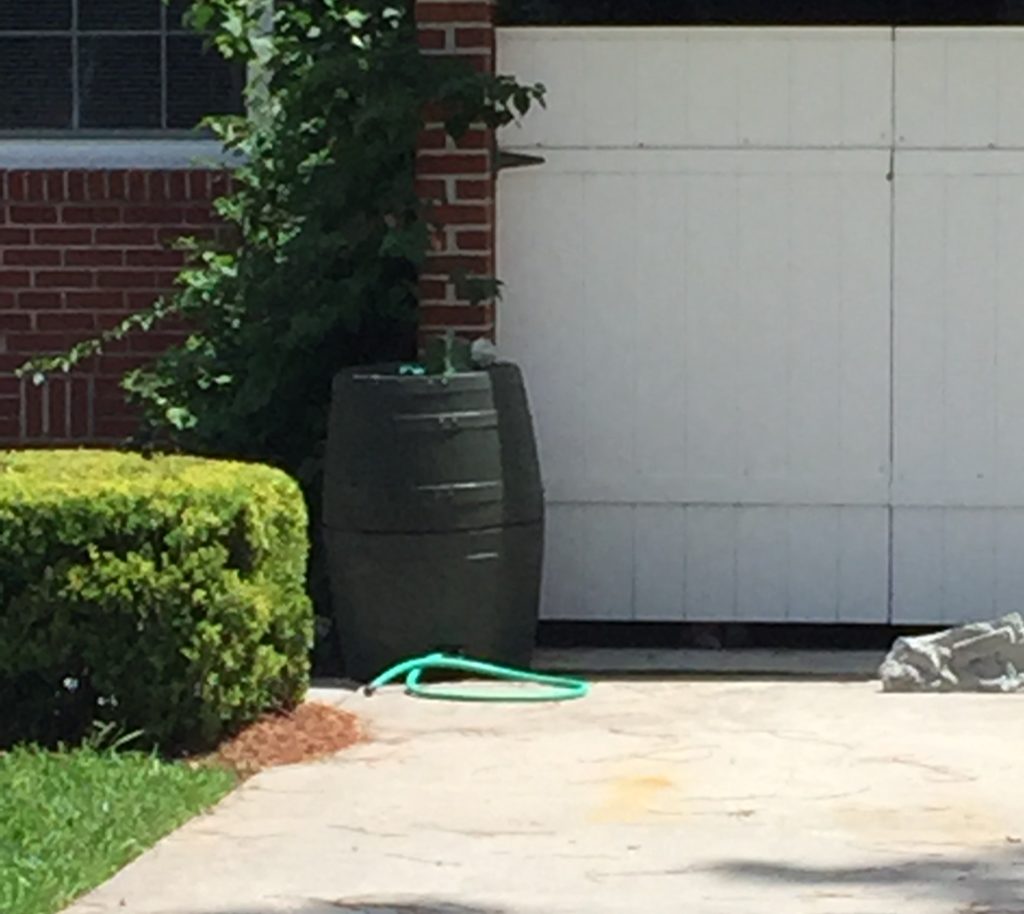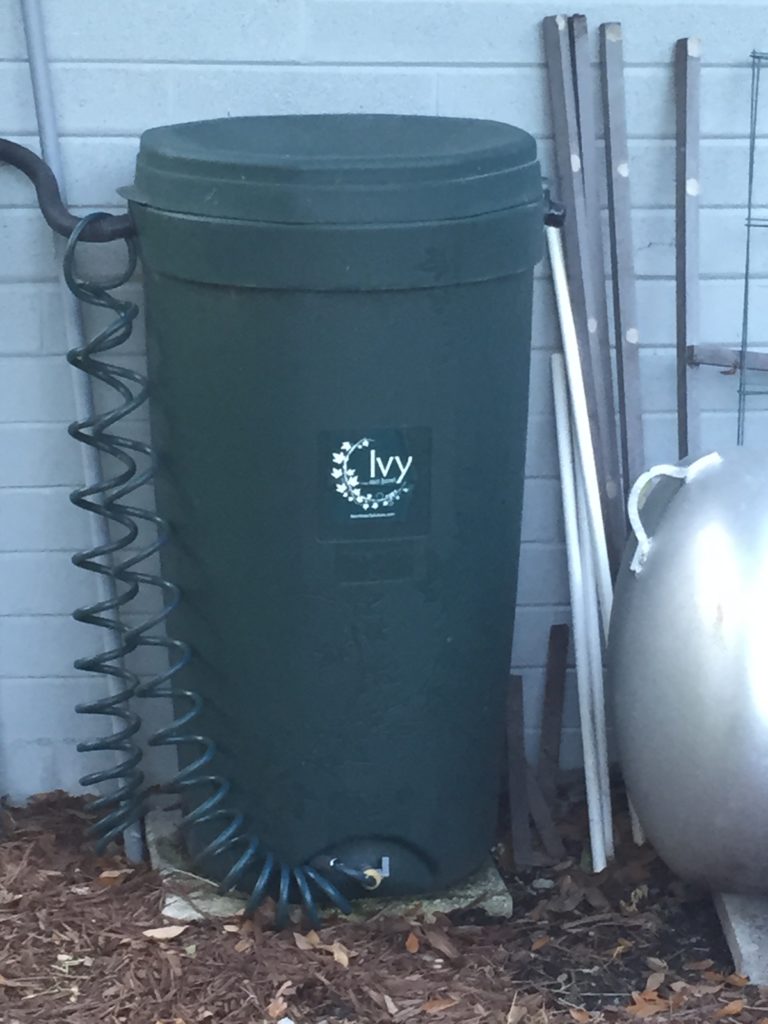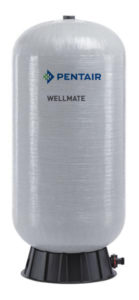Best Rainwater Barrels
Water prices are only going up. If you have not read our post about the global fresh water crisis you should check it out.
Freshwater is a necessity of life, and as such, people are willing to pay almost any price for it. In economics parlance, this means that water is an inelastic good, because a price increase has very little effect on demand. Unfortunately, water is being commoditized, and will react inelastically in global demand and pricing, much like oil. While consumers have some alternatives to petroleum dependence, no one can live without fresh drinking water.
One way for people to mitigate the impact of increased water prices is to start producing their own freshwater. Whether you are saving free water for drinking or for watering your garden, rainwater catchment systems are wildly growing in popularity.
The absolute heart of a rainwater catchment system is, of course, the rain barrel. This article is meant to be a guide on the best rain barrels for rain catchment systems and will outline your best options while reviewing the various models.
Types of Rainwater Barrels
You may be surprised to learn that there are many different options, colors, and types of rainwater barrels available. Some of the more popular models are upcycled (read: recycled) blue barrels commonly found in the transportation and food industries. These are the best bang for your buck.
If you are less inclined to go with an ugly barrel, you aren’t alone. In fact, decorative barrels are popping up all over the place as demand has grown over the years. They combine functionality with design and look natural in many backyard or porch areas and can be incorporated to look natural in the area.
Alternatively, if you are shying away from barrels in general, there are several rainwater catchment reservoirs in rectangular shapes that can be more easily hidden against a wall and have more discreet profiles.
For the serious rainwater DIYer there are bulk solutions available. These are suitable in high rain areas for large containment and useage.
What Size Barrel Do You Need?
There are three primary factors in determining the size of rain barrel that you need. Those are the effective surface area of your collection platform (your roof in most instances), the average rainfall at the installation site, and your anticipated usage.
The easiest way to determine your effective surface area is to measure the roof dimensions (including the eaves) from the ground. Keep in mind, you aren’t measuring the entire roof, only the area that will divert rain to your rain barrel.
Since the pitch of your roof is irrelevant to calculating the effective surface area you can run a measuring wheel or tape measure to determine your effective width and your effective length. The true surface area of a roof is taken on the roof itself, but we need the effective surface area, which will help us figure out how much water will fall on a given area on the ground.
For the sake of easy calculations, let’s say your effective roof surface area is 10 feet wide and 20 long.
10 ft x 20 ft = 200 ft2
Once you know your surface area, you will need to determine your average annual rainfall. You can find that information here.
Clicking on your state and city will give you a monthly breakdown of average rainfall. I am going to use Augusta, GA as an example. Added up, Augusta receives 44.8 inches of rainfall per year, on average. It’s also important to note that September, October, and November are the drier months, so we would have to either supplement the rainfall or keep it in mind for our usage.
To determine your rain collection potential, you multiply your effective surface area by approximately 0.6, multiplied by inches of rainfall per year.
Every inch of rain produces about 0.6 gallons of water per square feet which is where we derived the 0.6.
Rain collection potential = sq-ft x 0.6 x annual rainfall (inches)
In the case of our example in Augusta, GA, that would be 200 ft2 x 0.6 x 44.8 = 5,376 gallons per year.
That’s a lot of fresh water on just a tiny roof! If you could collect all of it, a 2,000 sq-ft home would collect 53,760 gallons per year. Just imagine what high rainfall areas like Seattle or Florida could produce.
If you don’t want to estimate the amount of water collection potential you have, there is a helpful tool provided by the U.S. Geological Survey located here
The harder part to calculate for this process is determining your usage. If you plan on using this system for irrigation purposes and have a separate irrigation meter, you can check your previous water bills. If you are using it for a garden or for use in non-potable water systems, the amount will vary greatly so you will need to use your best judgement. For example, your tomato garden requires a crazy amount of water compared to drought resistant gardens.
So to determine what size you actually need will depend on your rainwater flow rate. The more frequently you collect (fewer dry months and consistent rainy months) and more frequently you use the water, the smaller size you need. Places that have flood months or when being used for seasonal gardens need bigger systems.
To give you a better idea of what kind of water usage you might use:
Watering a single shrub – 7 gal
Fill a watering can – 1 gal
Wash a car – 100 gal
Flushing a toilet – 1.6 gal
Or you can time your flow. Record the time it takes to fill up a gallon of water from the hose, using a slow flow rate. Then water your plants as usual and calculate how many gallons you used based on the time it took to saturate the plants.
If you plan on using your rainwater catchment system often, look for something larger than 55 gallons. If you are going to be using it as non-potable water for irrigation, washing machine, dishwasher, and toilets or even potable systems then you will need something greater than 1,000 gallons.
Sometimes the best option for people is to have multiple rainwater catchment systems in place around your house. It can be very difficult to design a way to transport all collected water to a singular holding tank. It may be easier to have 3 – 4 smaller systems in strategic locations.
If you aren’t sure what size to start with or if you just want to get your feet wet, just start off with a 55 gallon barrel and see if you are still interested. You can always connected multiple barrels together for added capacity.
Materials
The most common barrel materials are wood, steel, fiberglass, and HDPE (high density polyethylene).
Without a doubt, the fiberglass tanks are the most durable and strongest of all of the rain barrels. These are typically equipped with “Food Safe” grade HDPE liners that can be replaced if ever damaged. These will stand the test of time and are used in industrial applications and are quite common in pool systems that handle large amounts of daily water flow. Fiberglass tanks can be buried or placed above ground. These tanks can be pressurized to boost water pressure in hoses and spraying your rainwater.
Fiberglass tanks are sturdy, heavy, and are the go-to choice for people that depend on rainwater as a way of life. One unique example is the island of Bermuda, where the majority of their fresh water originates from rain collection. These types of tanks are their preferred choice.
The next best option is HDPE. This Food Safe (not to be confused with Food Grade) material is used on playgrounds, cutting boards, and other food preparation applications. If you ever plan to use your rainwater in potable water systems you will need HDPE or fiberglass tanks, at the very least. Stainless steel would also be an option, but that is beyond the scope of rainwater collection systems and used more for industrial applications. HDPE can be found in two options: below-grade or above ground.
The other two common materials on this list are wood and steel. I do not recommend either material for use in rainwater catchment systems due to their lack of longevity. There are certain circumstances where wood or steel is fine to use but they will require upkeep and will eventually fail much sooner than the alternatives.
Wood barrels can be very attractive to a backyard setting and even look great sitting on the porch. They can double up as a table and can actually add character to your home. Typically these barrels include a liner on the inside to protect the wood from rot. The constant moisture will eventually cause them to fail, requiring replacement. But if aesthetics are important, I would certainly consider these as an option.
The material that is least desirable for rainwater barrels is steel. Unless you are using stainless (we are unaware of options in stainless steel), steel barrels should be avoided at all costs. Steel will rust and there is very little you can do to stop it. Steel is not meant to be in constant contact with water, be subjected to the weather, or remain in high moisture areas. These barrels will require frequent maintenance and should be avoided at all costs.
Hardware
Several options of rainwater barrels include necessary hardware. At a minimum, your barrel will need an intake hole or receptacle with a screen, an outflow spigot or valve, and an overflow drain.
Any barrel that is marketed as a rainwater barrel will probably have these items included which is a huge help in getting your system started.
One potential item left off of the barrel could be an overflow drain. Many systems are compatible for use with a gutter adapter that will redirect roof water into your barrel. As the barrel fills up, any excess will be directed back into the gutter to flow out.
As you make your purchase, it is important to know what you are buying so you don’t get a gutter adapter with an overflow drain and a barrel with an overflow drain – they are redundant and will cause your to do more work than required.
You also should consider what you plan on connecting to your barrel as an outtake. Many come with a garden hose adaptable spigot, but if you need to connect it directly to PVC pipe or tubing, you need to keep that in mind.
All water flowing into your rainwater barrel needs to be filtered. You should probably look for ways to filter the water multiple times to keep leaves and debris out. Gutter filters are great in addition to insect filters at the barrel. The more the better.
Which Rainwater Barrel Should I Buy?
This is a tough question and depends a lot on what you value most in your barrels. Rainwater barrels can add a whole new dimension to your landscape and backyard. Or they can be a cost effective measure to help you save money. Alternatively, maybe you just want to be more environmentally friendly. Whatever your reason, rainwater catchment systems are a great addition to your home and we have broken down a list of our favorite barrels.
Best In Class
The fiberglass Wellmates by Pentair are commonly used in a variety of applications. Their durability lends itself to permanent installs for rainwater catchment systems with a “set it and forget it” mentality. These are definitely more pricey but for those who want or need reliability, these are definitely the barrels (tanks) to buy and they come in a variety of different sizes.
Due to their corrosion resistance, they can even be buried underground. They are also paintable. Of all the barrels, these are the only ones that can be pressurized to increase water pressure so you are able to move water to a second story or add it to an existing sprinkler system.
These workhorses are used in industrial applications in addition to residential and commercial uses. They were built for dependability and that’s exactly what they are. The only downsides to them are the cost and they will probably not add another dimension to your backyard.

Wellmate WM-9 / WM0120QC Fiberglass Tank (30gallon) – check prices on Amazon.com
Economy Barrels
The blue 55-gal drums that have been upcycled for use in rainwater catchment systems are by far the most bang for your buck. They are cheap, can be purchased over the internet or possibly even found at local packaging companies. These barrels are airtight, Food Safe, BPA-free and are completely customizable. For those weekend warriors and DIY lovers, these barrels give you the ability to completely design your own system from scratch. You can marry up multiple barrels and let your system grow as your needs grow.
There are a few downsides to using these barrels. First, you are taking an object that is not even remotely close to being a usable product and converting it into a rain barrel. You will be required to make inflow and outflow holes in the barrel. None of the required hardware is included and will have to be purchased separately. And without doubt, they are the most hideous option available on the rainwater barrel list. If your neighbors don’t mind the blue drum sitting in your backyard, then it’s hard to argue the value on this pick.

Drum with Metal Band and Plastic Lid, 55 gal, Blue – check prices on Amazon.com
Aesthetic Options
There are many other decorative options in wood, various plastics, and other materials. We are not opposed to people using them in their own rainwater catchment systems but urge everyone to do their due diligence when making a selection.
Our favorite choices are the plastic barrels that have wood grain molding. They look like wood barrels but provide the longevity of plastic. Many also have flat backs so that are easily pushed up against a wall. They also arrive ready to go equipped with spigots, strainers and everything. However, a major downside to these barrels is more of the design emphasis was placed in aesthetics over longevity and functionality. Many of these barrels are very limited in their capacity.

50-Gallon ECO Rain Water Collection Barrel – check prices on Amazon.com
Other Things to Consider
One important aspect of your rainwater barrel that you should consider is the mounting level. By that, I mean how high above the ground are you going to place it. Rainwater outflow, without a pump or pressurized system is only fed through gravity. As the volume of water inside the barrel decreases, so will the water pressure flowing out.
The higher you mount your barrel, or have it sitting, the greater pressure you will be able to generate. Placing your barrel on an elevated porch can be a good idea or on an elevated stand can help. It’s also smart to keep your barrel off of the ground, even if you are using non-corrosive materials. Wherever you decide to place your barrel, make sure to think about the effect of its location on your usage.
A great reason for starting smaller and growing your system to meet demand is how easy it is to expand. Many modular barrels are fitted with additional valves to connect hoses or pipes to other barrels when added. Instead of purchasing a 100+ gallon barrel, you can simply buy 1 – 55 gallon barrel and add on a second one if needed.
It’s always a good idea to place your barrels in shady areas to prevent premature deterioration of the barrel itself and to avoid overheating from the sun. If a shady area is not an option, a shade cloth can be draped over top.
If you need cleaner water or if you intend to build a system for potable water applications, always consider adding a “first flush diverter.” These inexpensive mechanisms discard the first few gallons of rainwater collected, which is presumably the water with most contaminants from the roof. As your roof sits idly, animals and dirt accumulate and are washed off during the first rain, so first flush diverters are a way to keep your collection water clean.
Lastly, rainwater collection systems are a fun and rewarding activity. Children love them, as do environmentally and money conscious adults. Adding a water meter is a great idea for quantifying how much water was saved and re-used.
Learn more about global water crisis here.
I am looking forward to buying a rainwater barrel for collecting water. Your post is such an informative post, lots of newer things got to learn so I hope this will help me a lot to buy a perfect water barrel. Thanks a lot for sharing the post.